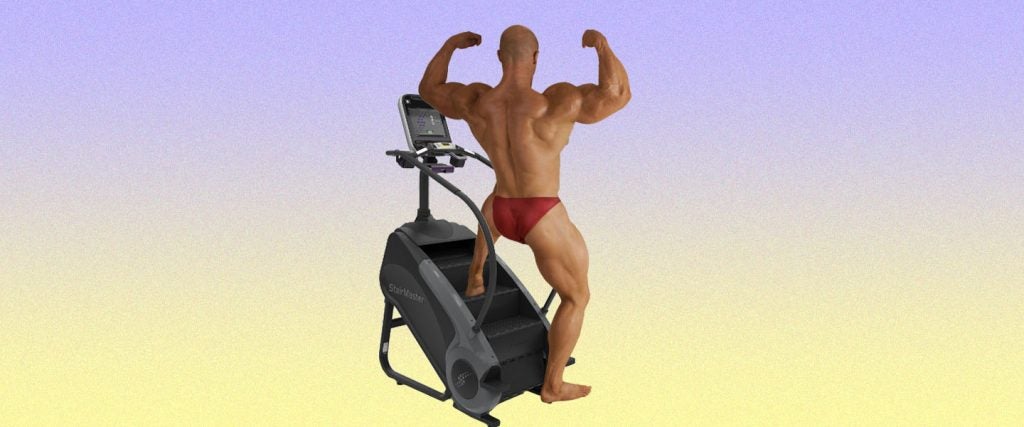The history of the stepmill is interesting inasmuch as the makers of the StairMaster actually got things right the first time around. From there, they ruined it by saturating the market with a barely acceptable substitute for their superior product, and then they spent decades phasing out the inadequate model that had grown to define their brand.
The StairMaster was first unveiled in 1984 by its original parent company, Tri-Tech Inc. in the form of the Aerobic 5000. This inaugural foray into the world of motorized stair-climbing offered virtually everything expected from a modern stepmill — namely an endless, revolving set of stairs. Press clippings from that year were laudatory with respect to the Aerobic 5000, and routinely credited it with providing the capability to climb the Empire State Building or the Sears Tower from the comfort of the users own living rooms.
One feature of the machine that caused consternation rather than comfort was its price tag of $3,700 (which is approximately 10 grand in 2021 dollars). During an era when the average yearly gym membership was between $75 and $100, gym goers were faced with a scenario where they could either spend the upfront equivalent of 37 years’ worth of gym memberships for an in-house version of the machine, or wait until their favorite training location eventually ponied up the requisite dough for an Aerobic 5000.
For most of the health-focused people in that fitness generation, neither occurrence ever transpired.
Why? What happened to the stepmill?
By 1987, StairMaster was well into promoting the StairMaster 4000, a pedal-pumping stair climber that cost its users roughly half of what the Aerobic 5000 cost. Not only was the expense of the unit markedly reduced, but so was the overall size of the apparatus. More importantly, the uniqueness of this model seems to have been the easiest to patent, since it was likely impossible to patent any significant component of what was essentially a miniature escalator.
It was this version of the StairMaster that I initially encountered when I began training in commercial gyms during the late 1990s. I can’t say that it was anything special, but it didn’t last all that long either — beginning in the early 2000s, several clubs began to slowly replace their pedal-press StairMaster 4000s with the original stepmill model. Part of this swapping-out process was likely owed to the steep decrease in price of the stepmill model — at least relative to the rate of inflation — and the remainder was probably due to the expiration of the original patent, which occurred in 2002.
It’s like they always say: If you can no longer protect your inferior product through a patent, you might as well produce the effective version that your customers truly desired from the very beginning. (Actually, I think I’m the only one who says that.) Between 2000 and 2015, the majority of the stair climbers were replaced with rows of far more efficient stepmills.
Let’s get down to brass tacks, though: What does the stepmill actually do to help me?
It’s unlikely that any other cardiovascular training machine available in most gyms will so quickly avail its users of practical lower-body endurance building and strength development. I mean, it essentially works all the muscles in your legs — from your glutes and quadriceps to your hamstrings and calves. Moreover, you can also change the angle of your ascension to stress the muscles from different angles, thereby placing more emphasis on whatever muscles you wish to target the most. And of course, muscular benefits aside, you’ll burn three times as many calories by walking on a stepmill than you will by walking at the identical pace on a treadmill.
If nothing else, it sounds like the stepmill is a huge time-saver.
And people are rapidly beginning to figure this out. For your sake, I hope that your gym is well-funded and offers rows of stepmills to its members. There’s no greater frustration than arriving at the gym late, assuming a capitulatory position and posture at one of the elliptical machines, and glaring enviously and longingly over at the guy who was lucky enough to get to the stepmill before you. After all, he’s now the one moving up in the world, not you.

